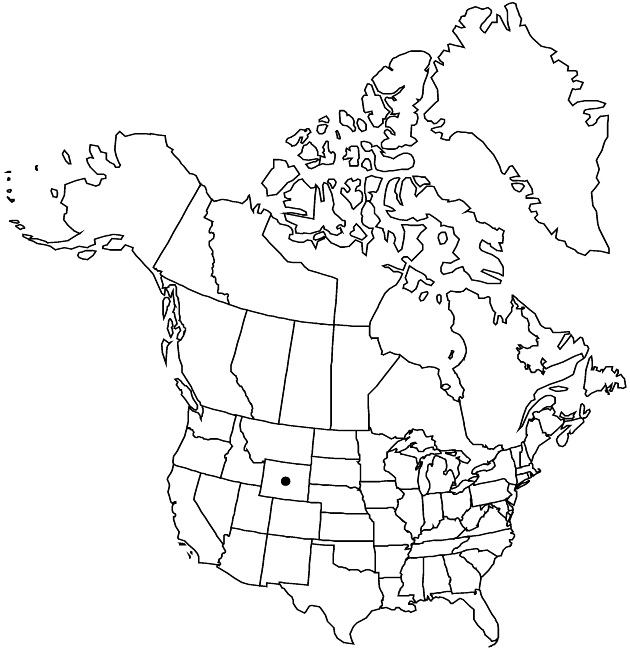Pyrrocoma clementis var. villosa
Phytologia 73: 57. 1992.
Endemic
Basionym: Pyrrocoma villosa Rydberg Bull. Torrey Bot. Club 27: 625. 1900
Treatment appears in FNA Volume 20. Treatment on page 416.
Plants 10–15 cm. Stems ascending. Leaves oblanceolate, 70–100 × 10–15 mm, margins entire or slightly denticulate. Involucres ca. 20 mm wide. Phyllaries narrowly lanceolate, apices attenuate. Cypsela faces glabrous.
Phenology: Flowering Jul–Aug.
Habitat: Openings in pine forest, above timberline in alpine meadows
Elevation: 2700–3500 m
Discussion
Of conservation concern.
Variety villosa is recognized mainly by its glabrous cypselae, lanceolate phyllaries, and geographic isolation. It is known primarily from the Big Horn Mountains in north-central Wyoming. The affinities of this poorly known taxon are obscure. It has been considered a distinct species or related to Pyrrocoma uniflora or P. integrifolia.
Selected References
None.
Lower Taxa
None.
"[" is not declared as a valid unit of measurement for this property."[" is not declared as a valid unit of measurement for this property.
... more about "Pyrrocoma clementis var. villosa"
introrse +
connate +
distinct +
herbaceous +
attenuate +
scarious +
green +
distinct +
hirsute +
papillate +
continuous +
1-nerved +
oblanceolate +
petiolate +
clasping +
auriculate +
3mm;30mm +
lanceolate;narrowly oblanceolate +
ribbed +
stigmatic +
brownish +
persistent +
15;60 +
unequal +
absent +
lanceolate +
reduced +
sessile +
yellow +
absent +
10-12-nerved +
glabrous +
dimorphic +
4mm;7mm +
staminate +
Wyo. +
straight +
eglandular +
distinct +
proximal +
1;5 +
bisexual +
dispersed +
singly +
indeterminate +
2;5 +
surrounding +
campanulate +
20 cm200 mm <br />0.2 m <br /> (?) +
alternate +
oblanceolate +
erect +
deltate +
white +
2-carpellate +
inferior +
attached +
anatropous +
tawny +
persistent +
tough +
thick +
absent +
connate +
1-nerved +
persistent +
distinct +
herbaceous +
falling +
proximal +
lanceolate +
unequal +
equal +
Phytologia +
1992 +
pistillate +
absent +
fertile +
epaleate +
pitted +
convex +
fibrous +
exalbuminous +
modifed +
3;4 +
Endemic +
alternate +
simple +
pale and often red-tinged +
ascending +
triangular +
2-branched +
glabrous +
Pyrrocoma clementis var. villosa +
Pyrrocoma clementis +
variety +
singly +
smaller +
tubular-funnelform +
equaling +
sessile +
perennial +
